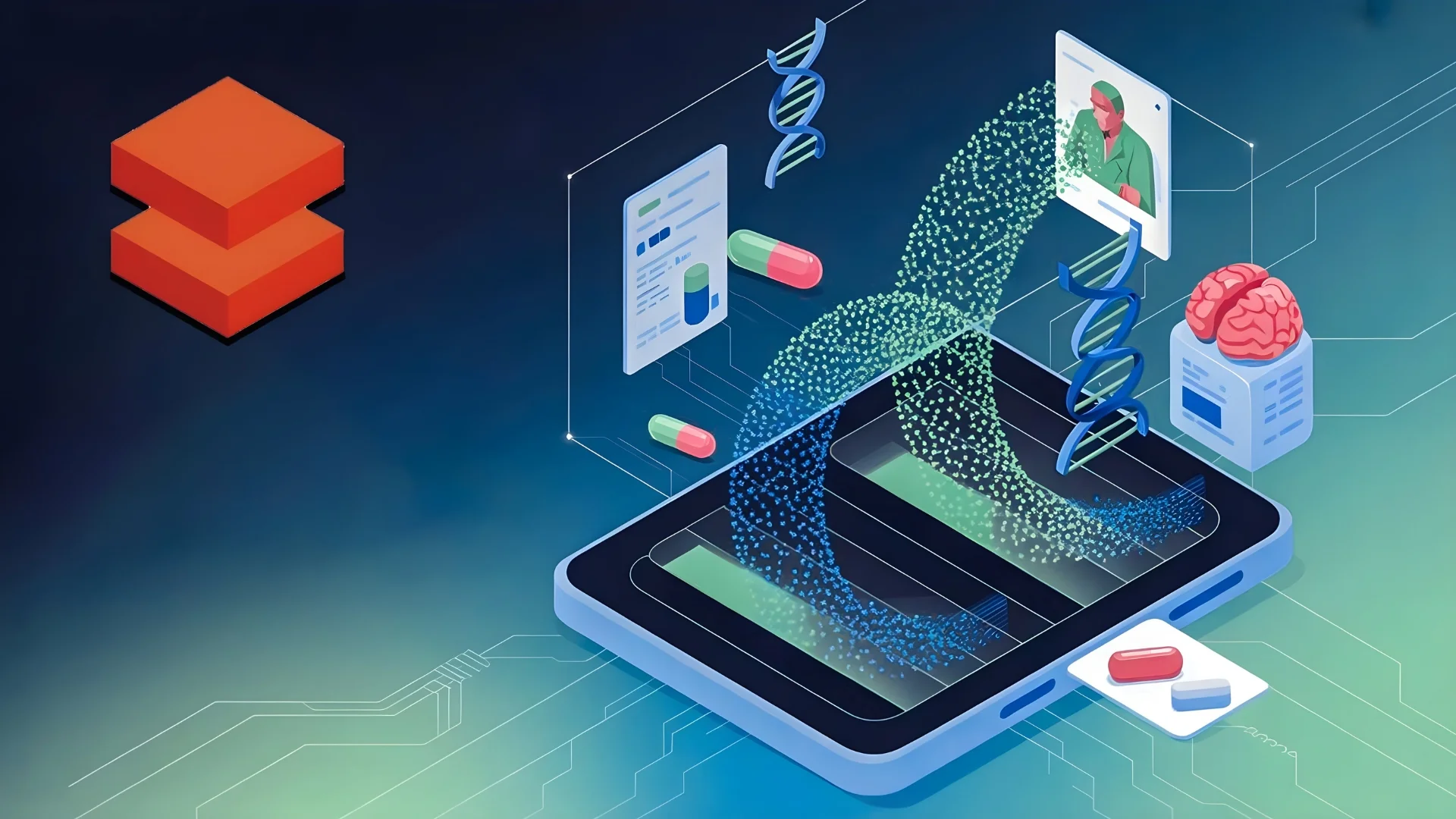Introduction
Well, gone are the days when we had to go to food stands or restaurants to satisfy our desires for our favorite foods or to stores to get anything we desired, be it a fashion need, a healthcare product, or anything else. Instant satisfaction is unavoidable in today’s fast-paced society. We have search engines capable of producing results in microseconds. Similarly, we anticipate the same from products and services. In addition, our busy schedules have prevented us from engaging in personal pursuits such as dining out, shopping, and other activities. This is why we desire delivery and consumption at our convenience. Call it societal development or the millennial mentality; the on demand economy is inevitable. Convenience has been the driving force behind the expansion of the on demand app development market. The on demand economic movement will revitalize the supply chain movement and enhance customer satisfaction. Numerous technology organizations are emphasizing on demand app development in order to create applications that serve this purpose.
In this blog, we will look into everything about on demand application development, how to build an On Demand app, and more. But before that, let’s look at what On Demand Application is.
Table of Contents
- Introduction
- What is an On Demand App?
- Why are On Demand Applications So Popular?
- How does an on demand app work?
- How to Build a Top On Demand Application?
- For Customers
- For service providers
- For Admin
- Team Needed to Develop an On Demand Application
- How much does it cost to develop an On Demand Application
- Industry verticals that have been significantly impacted by on demand applications
- Conclusion
What is an On Demand App?
On demand applications are customized mobile applications designed to meet the demands of clients upon request instantly with a timeframe of delivery in a few hours. The design, functionality, and user interface of these applications are tailored to the nature of your business and intended audience. Consider Uber, the app that allows consumers to reserve cabs and go to their locations. Doordash is one of the finest aggregators of on demand food service applications. Each of these applications is created with the relevant target audiences in mind. On demand is one such platform that enables users to obtain any service in the shortest time possible.
Why are On Demand Applications So Popular?
The popularity of on demand apps has skyrocketed in recent years because they make it possible to obtain goods and services without leaving the house. They are so common because they help people save time. Instead of going to the store and waiting in line, you may get what you need with just a few taps on your smartphone.
Increased competitiveness in the on demand economy is another factor contributing to their rising appeal. With so many businesses competing for clients, pricing has become more competitive, and customers can be confident that they are receiving the best bargain available. In addition, on demand apps frequently provide discounts and rewards for loyal customers, which improves their desirability. As on demand apps continue to develop, their popularity is certain to increase.
Moreover, investors are picking up on the novelty of the concept, which is helping to drive the expansion of on demand apps generally. This is a game-changing development in the field of app creation. In the areas of supply chain management and food delivery, among others, new technologies are affecting previously manual tasks by providing vendors with more efficient technical solutions.
How does an on demand app work?
- The user initiates contact with the service provider in an effort to acquire the sought-after good or service
- The user initiates contact with the service provider in an effort to acquire the sought-after good or service
- The application connects the user’s request with a suitable and accessible service provider.
- The provider verifies the user’s identity and accepts the request.
- User requests are fulfilled rapidly by sending the requested service to the user’s desired location.
- Payments get authorized via a payment gateway.
- Delivery confirmation is made between the customer and the delivery team.
Types of On Demand Apps
If you’re planning to create an on demand app, you should first decide what problem you’re trying to solve. The answers to these questions will shape the audience and functionality of your next app. On demand applications can be categorized into three classes based on the users involved:
- On Demand Apps for Business-to-Business (B2B
- On Demand Apps for Business-to-Consumer (B2C)
- On Demand Apps for Person-to-Person (P2P)
On Demand Apps for Business-to-Business (B2B)
The first category of on demand apps provides a platform for companies to market their products and services to other companies (B2B). One example is a business that brings dry cleaning to the office, while another is a company that walks dogs while their owners are at work. The primary distinction between business-to-business and business-to-consumer on demand apps is that the former caters solely to businesses while the latter targets consumers. As a result, B2B on demand app development is typically more involved due to the necessity of including features like business registration, scheduling, payments, and invoicing.
On Demand Apps for Business-to-Consumer (B2C)
The second category of on demand app is made especially for end users (B2C). A wide variety of services fall under this category, including but not limited to grocery delivery, dry cleaning pickup and delivery, taxi and ridesharing services, and meal delivery. B2C on demand apps are intermediate between B2B and P2P on demand apps in terms of the complexity of their development. Although not as sophisticated as B2B apps, consumer-facing ones nevertheless need to take into account features like user registration, billing, navigation, and order management.
On Demand Apps for Person-to-Person (P2P)
The third category of on demand apps is designed for those who offer their skills to others (P2P). One of the most well-known cases in point is Airbnb, a website where locals may list their spare rooms and apartments for rent by tourists from all over the world. Since services like business registration and billing are unnecessary for P2P on demand apps, they are typically the easiest to design. They do, however, require capabilities like user registration, payment processing, messaging/reviews, and location-based mapping and locating.
How to Build a Top On Demand Application?
Today, on demand app development is a cakewalk with the use of an advanced technology stack. If you’re considering developing an on demand app for your business, there are a few considerations you must make. Here, we will outline the processes necessary to create a successful on demand application.
Identify your target market.
Finding your target market should be your first move. Who is going to use your app? What needs are they hoping to meet? Once you have a solid grasp of your target audience, you may proceed to the next step.
While developing a business strategy for your app concept, you should do a comprehensive market analysis that distinguishes between target audiences and end users, as this will have a significant impact on the development of your on demand mobile app’s features.
Businesses make a significant error when they just consider technical (code) factors and ignore target market. While coding merely ensures that the app you are developing will function properly. Finding the target population, their problems, and their pains will help your development of user-friendly apps.
Check out the competition.
After you have a clear idea of your target audience, it’s time to look into the apps already on the market. In addition to your app, are there other similar on demand apps that cater to your customer base? How are they doing? To what extent could they improve? The ability to design an app that fulfills the needs of your demographic depends on your familiarity with similar offerings from competitors.
Business model
Following the completion of identifying the target market, the development team would begin selecting their business model. Identifying the target audience is essential for determining if the app will have a B2B, C2C, or B2C service model. To elaborate, businesses must decide whether the on demand software they are developing is aimed at customers, producers, or distributors. Businesses will need to decide if they’ll be developing for iOS, Android, or a hybrid platform.
Select the appropriate platform.
iOS and Android are the two most popular mobile operating systems for on demand app development. What works best for your intended audience is a major factor in making this decision. To create an app, you must first decide whether it will be a native app (intended for usage on a single platform) or a cross-platform app (an app that can be used on both iOS and Android devices).
Choose the right technology.
Prior to beginning development on an app, it’s important to decide which technologies will be used. Get professional assistance from accredited developers at this point. Recruit people with a range of framework and language expertise, from React Native and Swift to JavaScript and C#. Additionally, stick to a preconceived notion of the capabilities, limitations, and features that you need.
Create an MVP
Following the selection of a platform and technology, you must begin app development. But before you construct every conceivable feature, you should consider creating a Minimum Viable Product (MVP). A MVP is a version of your application that has only the most basic features and capabilities. This will allow you to immediately launch your app, so you can begin collecting user input and iterating based on that feedback.
Test
Before releasing your application, it is essential to subject it to rigorous testing. This will help ensure that your application has no major faults or glitches when it goes online. Test both the frontend and backend of your application to ensure that everything is functioning as expected.
Key features of on demand applications
Before hiring an on demand mobile app development business, you should compile a list of the desired features for your app. These features and functionalities influence how an application will work in the marketplace. But first, you need to specify the various users who will profit from your app. On demand app users are, however, split into three main categories, including customers, service providers, and administration (admin). The main features of on demand apps are different for different user bases. Listed below are the different user bases and their key features for on demand apps.
For Customers
User Profile Management: Most on demand apps offer their customers the ability to easily register and sign in to their accounts via email ID, phone number, or a combination of Google, Facebook, or other social media accounts.
Real-time tracking: Real-time monitoring is an integral part of any on demand app development strategy. Depending on company requirements, this order can be tracked using GPS or IoT devices. The scope of the On Demand App Development project determines the Order and Tracking System’s complexity. This function fosters client confidence by informing them in real-time of the anticipated delivery and arrival.
Payment Integration: Methods for Payment Integration are reliant on the APIs of the third-party payment gateways you wish to use in your application. Typically, the decision is made by product owners, who subsequently sign contracts with payment gateway partners. Integrating these APIs without introducing security flaws is the primary emphasis of on demand app development.
Push Notification: Push notifications are essential for informing users of key events and offers, as well as highlighting the app’s presence on the user’s smartphone. It has been noticed that push notifications aid in increasing sales, making them crucial from a digital marketing viewpoint as well.
Ratings/reviews: Thanks to this function, your users can maintain constant communication with the system administrator. In the reviews section, customers can share their thoughts and opinions about the service or product in question. The ability to provide an instant response can help people feel like their opinions are being considered. This information is valuable to businesses as it allows them to make improvements to their apps and services.
Customer support: Customers can get in touch with the company’s support team right from the app, thanks to the Customer Care section. You can keep your clients satisfied and prevent any churn by providing them with first-rate customer service.
For service providers
User Profile Management: The service provider must complete the registration form, just like the clients, by providing information about their company or brand so that users can gain insight. Service providers can quickly and easily sign up with just an email address, social network account, or even a phone number and an OTP.
Push Notification: When a user requests one of the service providers’ products or services, the provider receives an immediate notification.
Accepting and rejecting requests: Within a specified timeframe, service providers must have the authority to approve or reject a customer’s request. There may be a circumstance where service providers are stocked to capacity therefore unable to take on any more requests.
Start & end service: The service provider must have a module to initiate and terminate the service.
Track earnings: Service providers need a function that allows them to monitor their earnings. It enables them to schedule their day more efficiently.
Informative Dashboard: Service providers should be equipped with an informative dashboard where they can monitor their performance, service histories, earnings, and associated statistics on a single platform.
For Admin
Admin dashboard: On demand apps must offer an intuitive interface. It should offer a user-friendly and adaptable admin dashboard for monitoring and managing both service providers and their end-users.
User management: Data such as user payments, cancelled order charges, discount amounts, etc., should be available to administrators. This will allow them to respond twice as quickly to any user complaints.
Manage pricing and commissions: The admin panel has the ability to view the prices of the products and monitor the commission fees.
Analytics and Reports: This feature gives crucial business analytics for making more informed decisions to enhance your offerings.
Team Needed to Develop an On Demand Application
To successfully develop an on demand application, a team of skilled specialists is required. Different people will need to take on various tasks, and each team member must have a firm grasp of their responsibilities. Listed below are some of the most important roles that must be filled on an on demand app development team.
Project Manager: The project manager is in charge of keeping an eye on things and making sure they stay on track throughout the duration of the development process. They will be the first line of communication with the client and should be able to articulate and resolve issues quickly.
Business Analyst: Business Analyst is responsible for comprehending the business requirements of the client and converting them into technological specifications. Additionally, they must have a solid grasp of the on demand market and the competition.
Developers: The developers are accountable for coding the application and ensuring that it adheres to all technical criteria. They must have superior programming skills and knowledge of the applicable technological stack.
UX/UI Designer: UX/UI designer is responsible for designing the app’s user interface and user experience. They must have a solid grasp of human interaction and current design trends.
QA engineer: QA engineer is responsible for testing the application to guarantee that it is bug-free. They must have strong analytical abilities and a keen eye for detail.
Technology Stack for On Demand App Development
From the user interface on the front end to the server architecture on the back end, there are a lot of technical considerations that must be made. We will examine the standard technical stack for building on demand apps in this section.
Front-end Development
The front end consists of all the components that contribute to the visual presentation on a web browser or mobile device. Developing a simple and straightforward interface is crucial. A high volume of requests must be processed quickly, and this is something the front end must be capable of as well. For this reason, JavaScript, HTML, CSS, React.js, Angular, Vue.js, jQuery, or similar JavaScript libraries and web frameworks are used for web applications. Whereas, Objective C or Swift for iOS and Java or Kotlin for Android are usually preferred for Mobile applications.
Back-end tech stack (server-side)
Back-end technology stack refers to the inner workings or foundation of a website or application. The backend technology stack includes:
Server-side programming languages are used to write the code to create the application with different native and cross-platform development options. Server-side languages may include C#, C++, Python, JavaScript, PHP, Swift, Objective-C, Ruby, Kotlin, GO, Dart, and more.
Common server-side web application frameworks include: Ruby on Rails (Ruby), Symfony (PHP), CakePHP (PHP), Flask (Python), Django (Python), Laravel (PHP), Xamarin (C#), Node.js (JavaScript), React Native (JavaScript), Flutter (Dart), Swift (Apple, both a language and a framework), GNUstep (Objective-C) and more
Common back-end web servers include Nginx, Apache, and IIS. Common databases include MongoDB, MySQL, PostgreSQlL
How much does it cost to develop an On Demand Application
There is no straightforward answer to the question of how much it costs to develop an on demand app. Estimating the price of an on demand application is dependent on a number of variables. In addition to wireframing, prototyping, design, development, and maintenance, there are other factors that can affect the cost. The app development cost for an on demand service app varies significantly based on its type, size, and to-be-included features.
Project’s complexity: The number and type of features you want in your app are the primary reasons that the cost can vary. By adopting a Minimum Viable Product (MVP) strategy, you can significantly reduce costs.
Project size: Development time and cost are proportional to the size of your project; larger items take longer and cost more.
Location of Development: The cost of developing an on demand app in Ukraine or India, for instance, may be significantly lower than that in the United States.
Prizing Models: There are numerous possibilities for engagement models on the market. The various forms of recruiting models include weekly, annual, hourly, and fixed-cost models. You must choose among them based on your budget and requirements.
Mobile App Development Platform: One can select from a variety of iOS app development services or create an Android app on demand. On the one hand, the Google Play store for Android requires a one-time subscription fee. The iOS app store, on the other hand, requires regular subscription fees. You must have an in-depth understanding of your target audience before making this choice.
Industry verticals that have been significantly impacted by on demand applications
Foods & Restaurant Industry: On demand food delivery apps such as Uber and Doordash allow users to peruse a variety of cuisines, restaurants, and cafés. They only need to select and place their order. The on demand smartphone app handles restaurants, automates order administration, delivery, and provides real-time tracking of orders and deliveries, among other features. With online meal delivery apps, restaurant apps, food delivery apps, and many others, you may make a significant impact and connect with your target audience.
Home & Cleaning Service Industry: On demand mobile applications for home & cleaning services aid in client and staff management. Customers have the ability to schedule a cleaning service. Based on the availability of their workforce, the service provider might allocate the assignment or cancel the services. Both stakeholders have access to and can manage the dashboard.
Healthcare Industry: On demand healthcare apps connect patients with physicians. It helps organize shifts, appointments, staff, requests for medical device repairs, and more. It is one of the booming industries where there is a great deal of room for technological innovation and speedy discovery in mobile app development.
Tours & Travel Industry: High-quality travel services are now easily accessible to consumers via their mobile devices because of on demand apps like Travelport and Airbnb.
Taxi booking services: On demand taxi booking apps, such as Uber, present a significant opportunity for the transportation industry. Connecting riders with cabbies who can offer them the finest possible service is a key feature.
Conclusion
People will always need to accomplish tasks, and given the current pace of life, an entirely on demand economy may one day develop from on demand services, if it hasn’t already. Today, the market for on demand applications is expanding rapidly, and you can use these applications in a variety of ways to improve business operations and customer service. On demand application development is a top-tier solution for both small and large businesses. On demand app development is among the top-tier options for businesses of all sizes. Keep this helpful advice handy if you’re planning to develop your own on demand business in the future.
Do you run a startup that caters to the on demand market? Or are you a business planning to enhance your internet presence through mobile devices? Regardless of your industry, on demand services will flourish in the next few years and not look back for a very long time.
Sparity is a web and mobile app development company with considerable experience in providing diverse industries with on demand app development solutions. Our tried-and-true methodologies and insights can help you design stunning on demand applications for your business. You can chat with our experts, who are trained and prepared to provide the best solutions for business owners.















